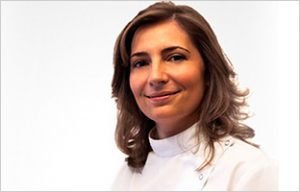It is convenient to visit the orthodontist at the age of 6-8. Even if at such early ages action is only taken when very specific problems appear, detrimental habits for the mouth development (teeth and bones) can be detected and stopped.
Some detrimental habits are:
-Excessive use of the dummy.
-Finger sucking.
-Incorrect tongue position (child deglutition, atypical).
-Mouth breathing.
Besides, at this age some common problems might be corrected, such as:
-Narrow palate.
-Preventing a loss of space when they lose their baby teeth.
Orthopaedics
Sometimes, the problem of a bad bite does not arise from the teeth, but from the bones supporting them. Those bones are the upper maxilla and the lower mandible. If both bones do not have an adequate relation of size or position, the teeth do not fit properly.
While the bones are growing, orthopaedic treatments can be used in order to correct their development. Orthopaedic treatments have limits and can only be used for a certain period of time. That is why an early detection is important.
Orthodontics
Corrective orthodontics treats malocclusions already formed. It is known as an orthodontic treatment, which involves braces fixed to the teeth.
There are different types of braces and different techniques, and we try to incorporate, as soon as they have proven effective, all technical innovations available to improve the quality of our treatments and shorten the length of treatment as far as possible.
Orthodontic treatments for children are conducted by Dr. Gema Olmos, Orthodontics Specialist.
Orthodontic treatment cost
The cost of a metal orthodontic treatment depends on the case, ranging from 2500€ to 3300€. The method of payment consists of a downpayment of approximately 800€ (which can be divided in two payments if requested by the patient) and monthly payments of a variable amount depending on the length of treatment, usually around 80€.
After analysing the preliminary diagnostic study, each patient is interviewed in order to be informed of the characteristics of the problem and the possible solutions. The patient will as well be given a closed budget beforehand, which is personalized.
The budget covers all the expenses arising from the orthodontic treatment as well as the professional fees, which obviously are consistent with the high degree of specialization, expertise and quality offered.



